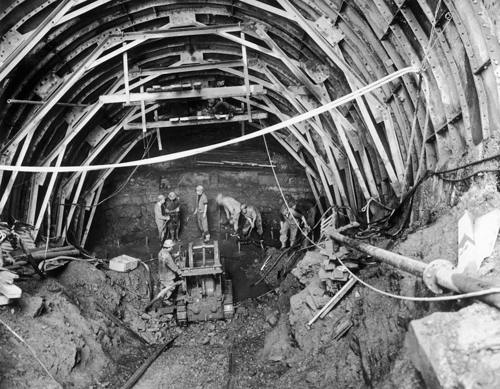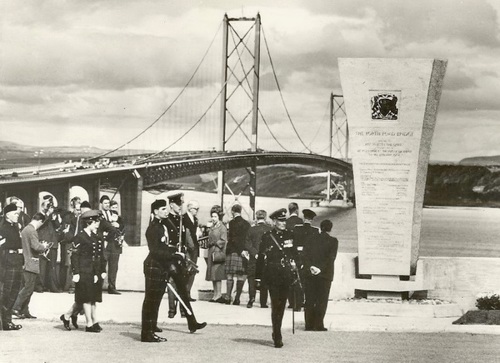West footpath/cycleway is currently closed for essential maintenance, please use the east footpath/cycleway.
Access Restrictions
Forth Road Bridge History
Why was the Forth Road Bridge Needed?
The History of the Forth Road BridgeThe need for a road bridge over the Firth of Forth came to light in the 1920s with the rising popularity of the private car.

A New Road Bridge across the Forth
The first proposals for a bridge were aired in 1923 and won the support of the Ministry of Transport the following year. Three possible sites for a road bridge, as well as tunnel options, were investigated but the Great Depression and Second World War postponed positive progress until 1947, when the Forth Road Bridge Order established Macintosh Rock as the site for the new road bridge.
The Forth Road Bridge Joint Board oversaw construction which began in September 1958. Freeman Fox & Partners and Messrs Mott, Hay & Anderson oversaw the design and supervised construction, which was carried out by Britain’s three largest construction engineering firms – Sir William Arrol & Company, The Cleveland Bridge & Engineering Company and Dorman Long (Bridge & Engineering) Ltd – joining forces to create a consortium known as the ACD Bridge Company Ltd.
1961 saw the completion of the main cable anchorages, bored into the rock on both shores, and the two main towers. The spinning of the main cables also got under way but – as the method of spinning several wires at a time back and forth across the estuary to gradually build up the main cable was new in Europe – a special training school had to set up in South Queensferry.

Nearly 40,000 tonnes of steel and 125,000 cubic metres of concrete went into the bridge’s construction.
By August 1962, 30,000 miles of high-tensile steel wires had been spun together to make up the main cables.
The final box girders for the completion of the main span were swung into place at the end of 1963, covered in the Union Flag and Lion Rampant to mark the occasion.
1964 saw the completion of the roadway and footpaths and the placement of its asphalt surfacing and lighting.
The final bill for construction amounted to £19.5 million, and the bridge was opened by Her Majesty The Queen on September 4, 1964.
At this time, it was the first bridge of its kind in the UK, the longest outside the USA, and the fourth longest in the world.
'Guid Passage' was the fitting motto given the Forth Road Bridge at its opening.

The bridge’s two main towers and cross-bracing were strengthened to accommodate the increased weight of traffic in 1990 and the main tower legs were strengthened in 1998, and the 768 hanger ropes from which the suspended decks hang were replaced between 1998 and 2000.
The Forth Road Bridge was designated a Category A listed structure in March 2001.



